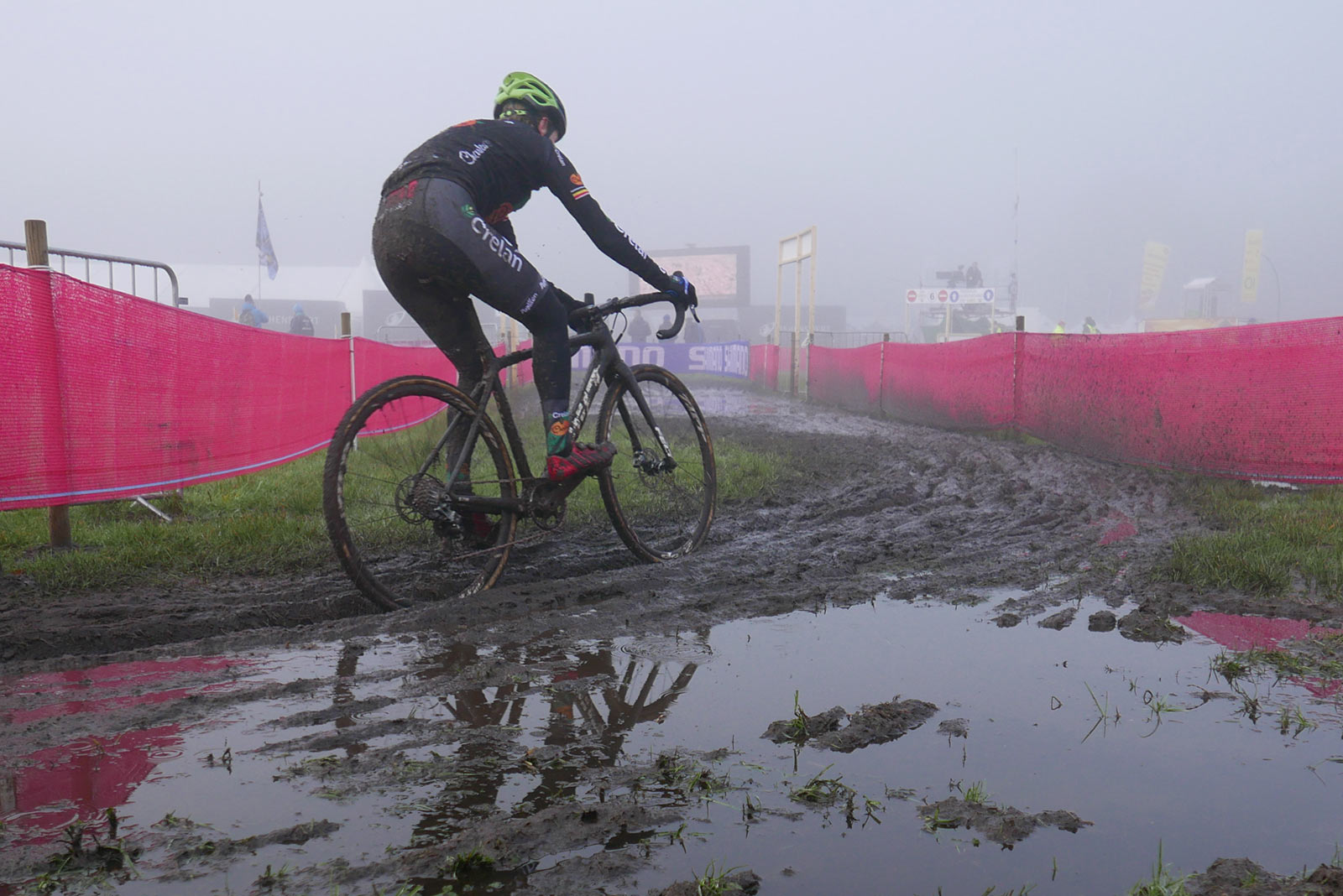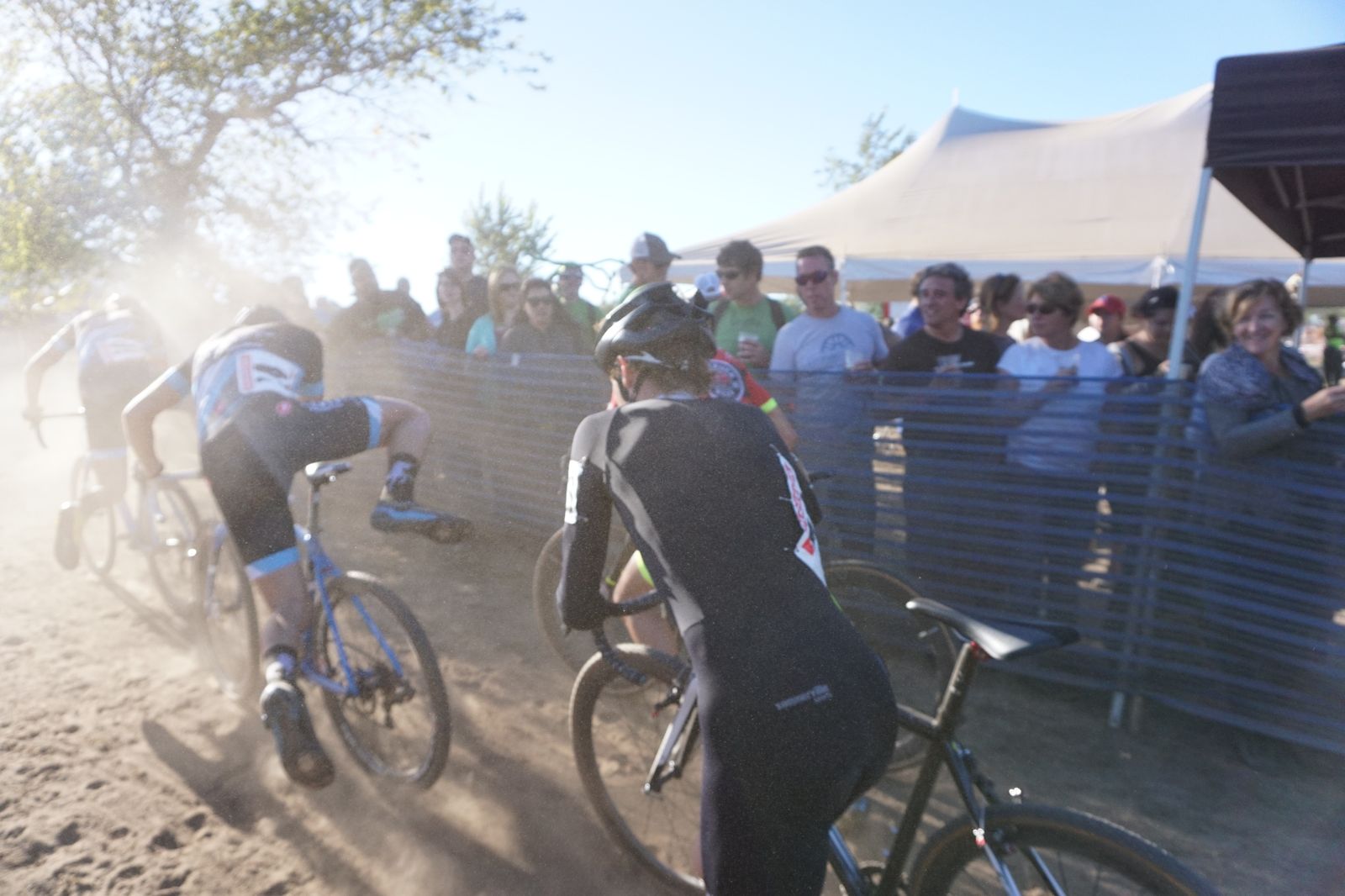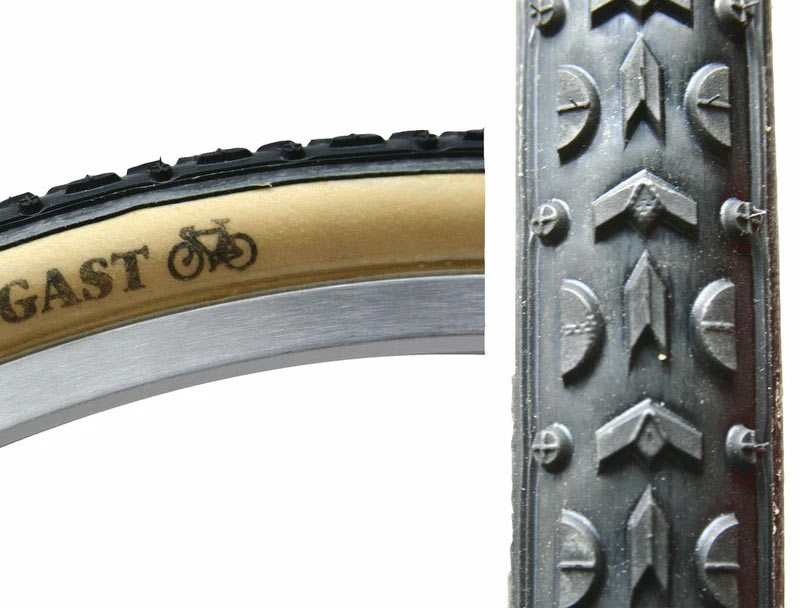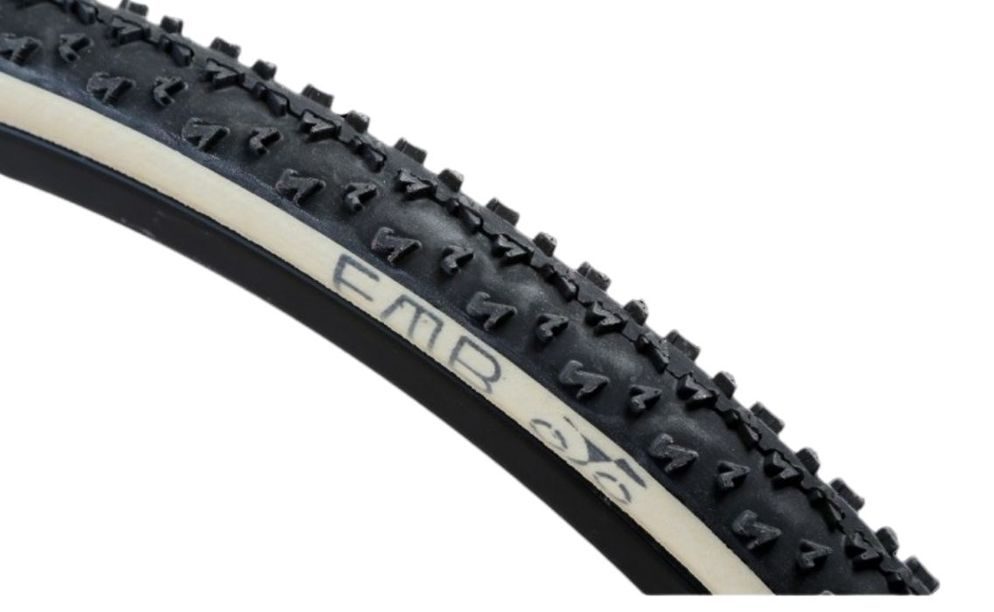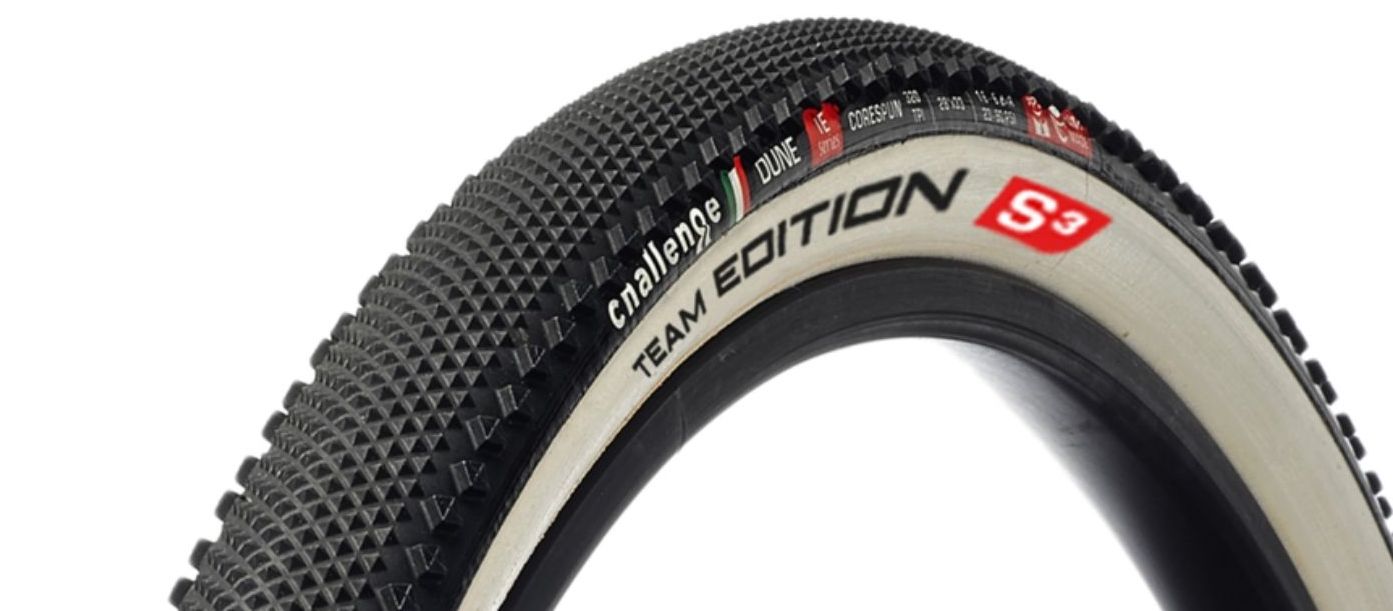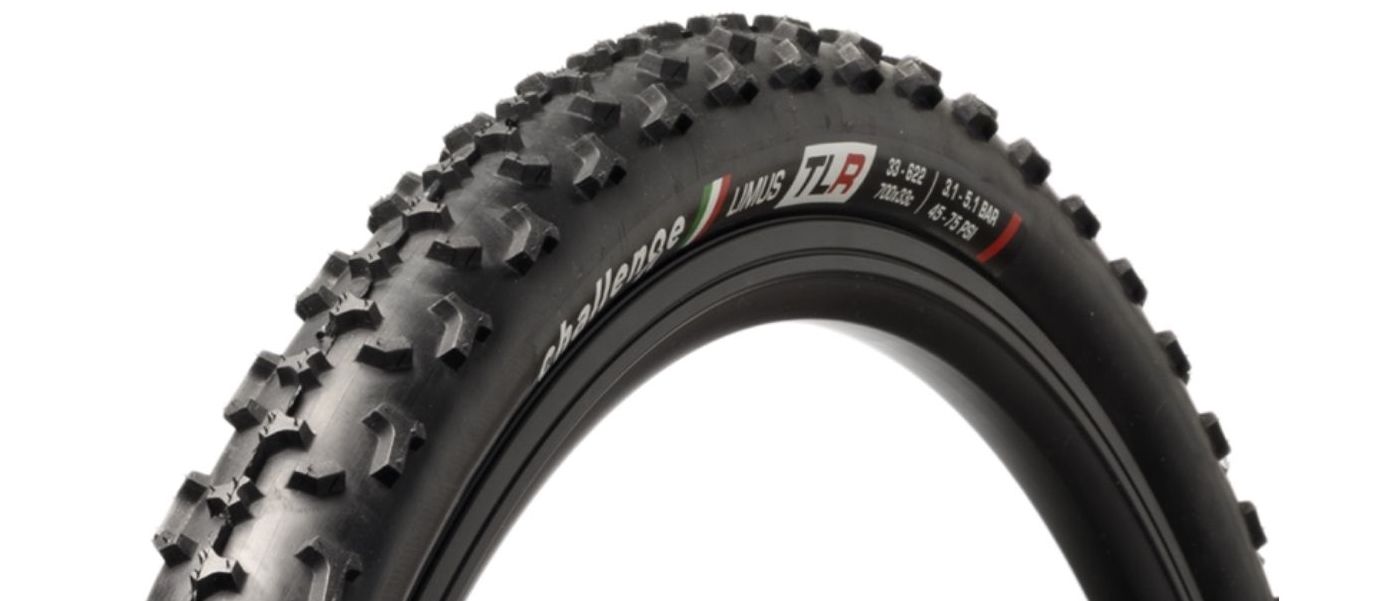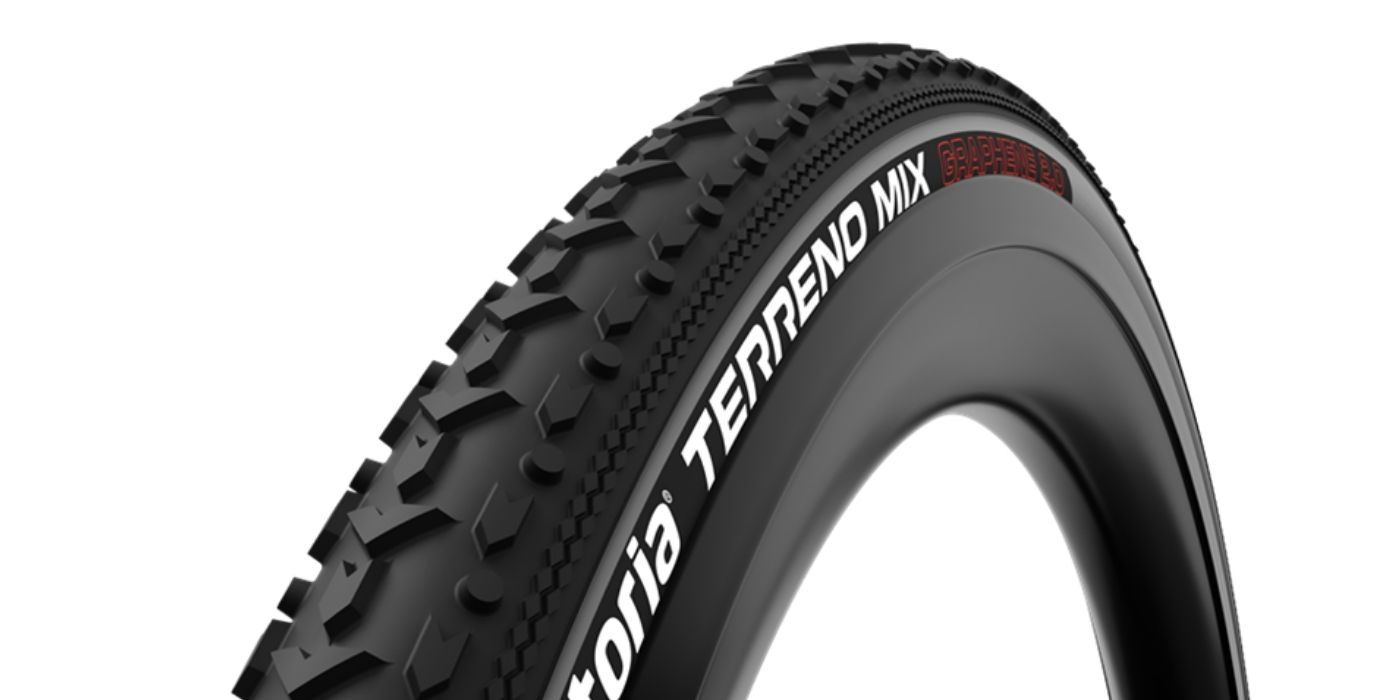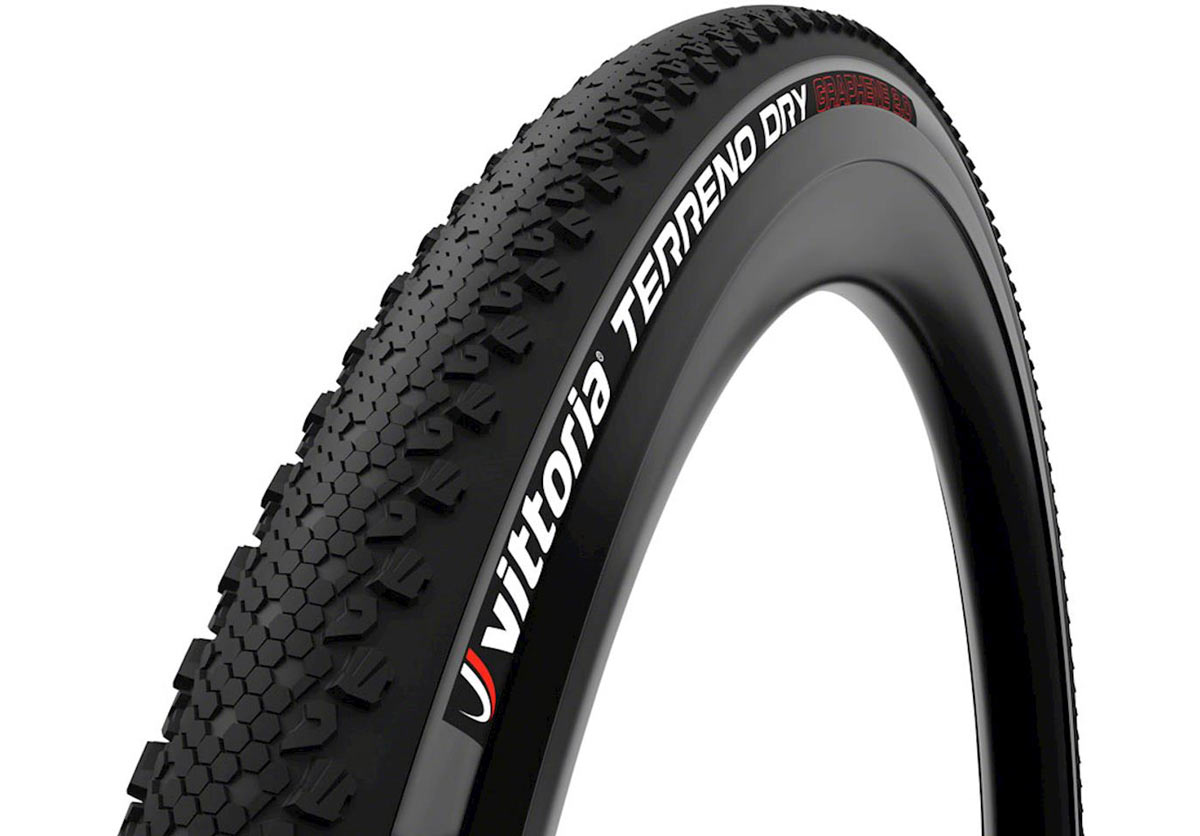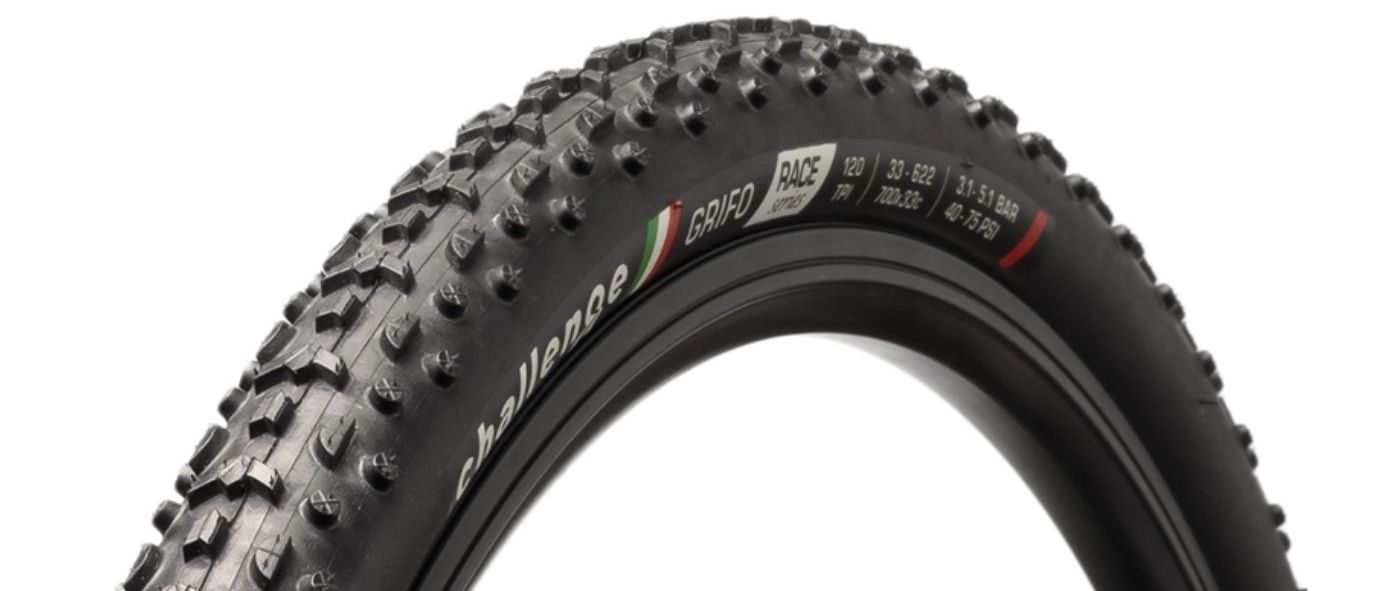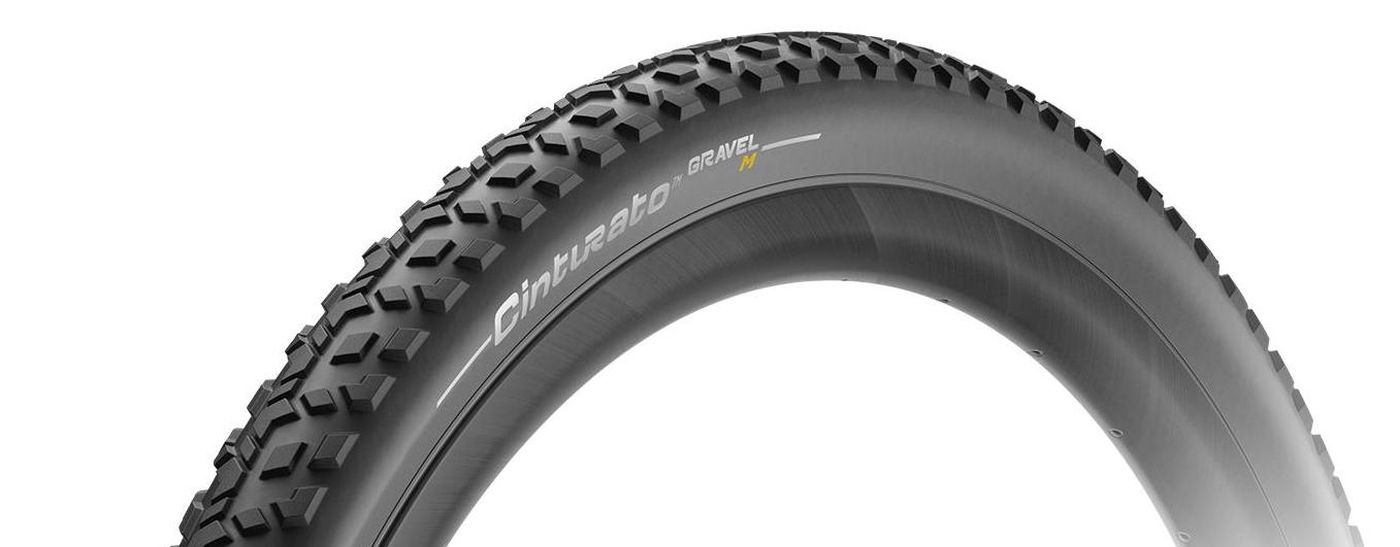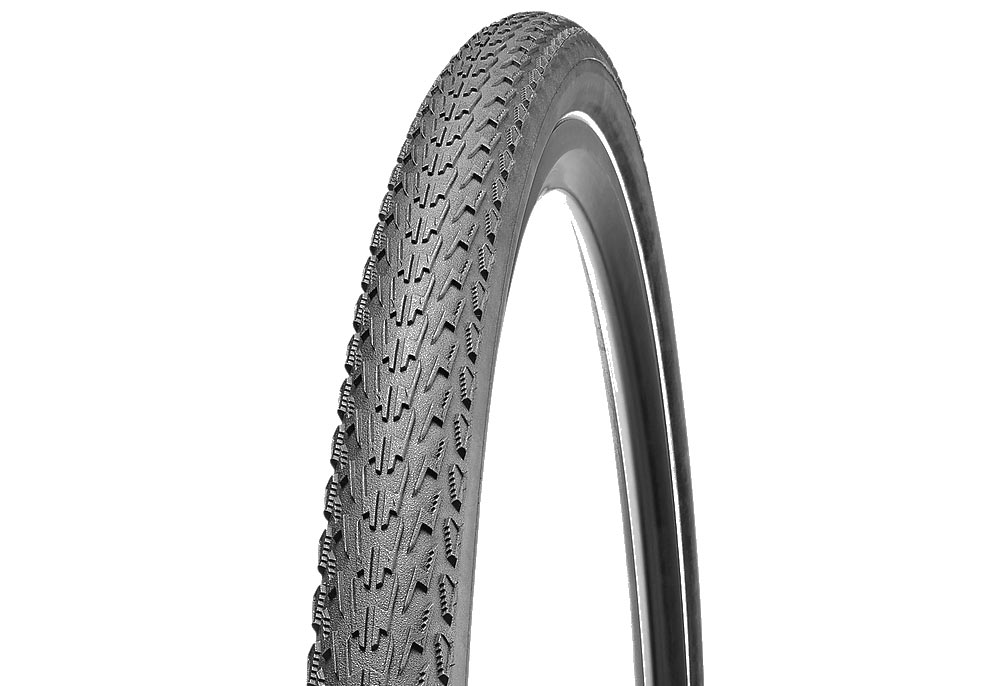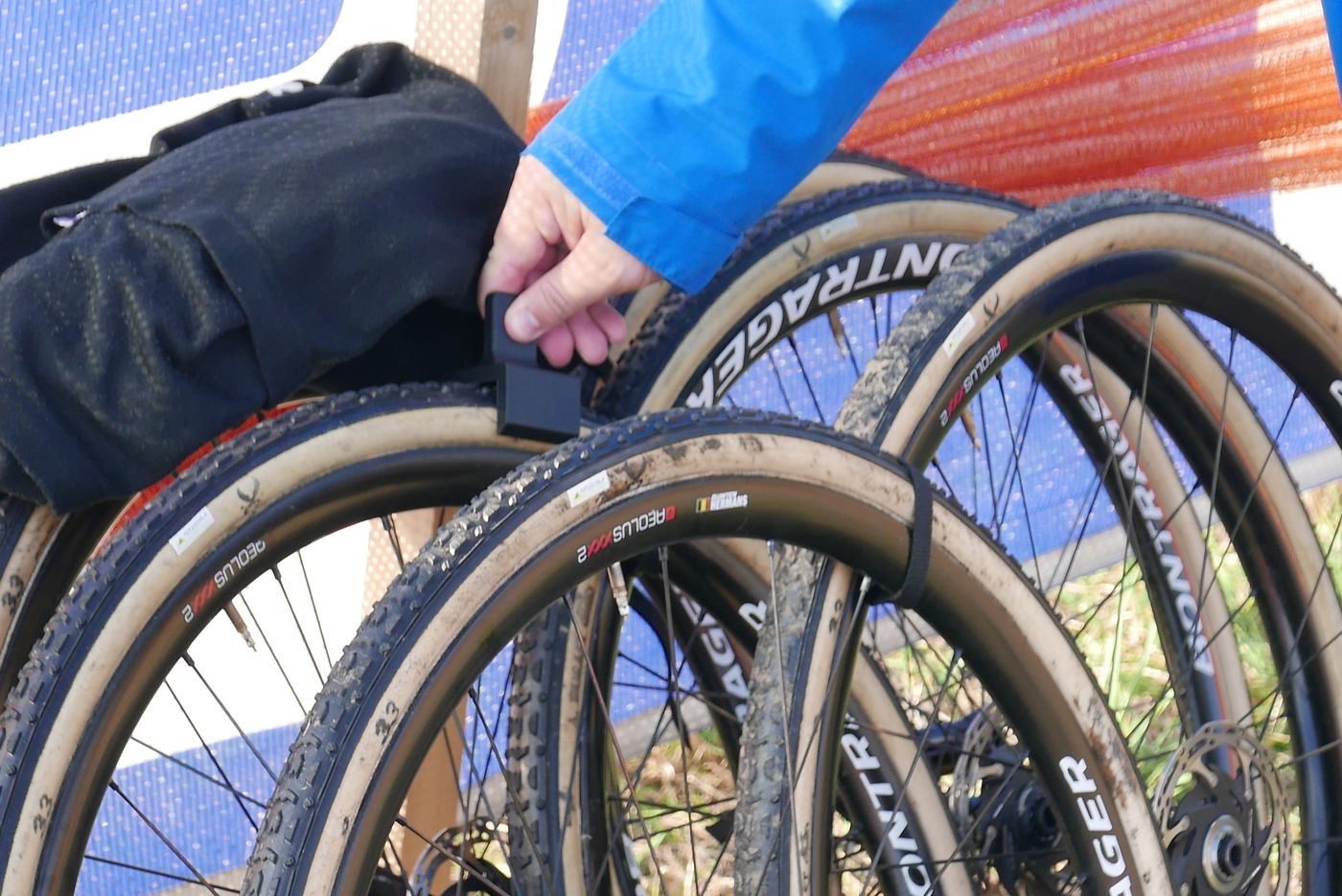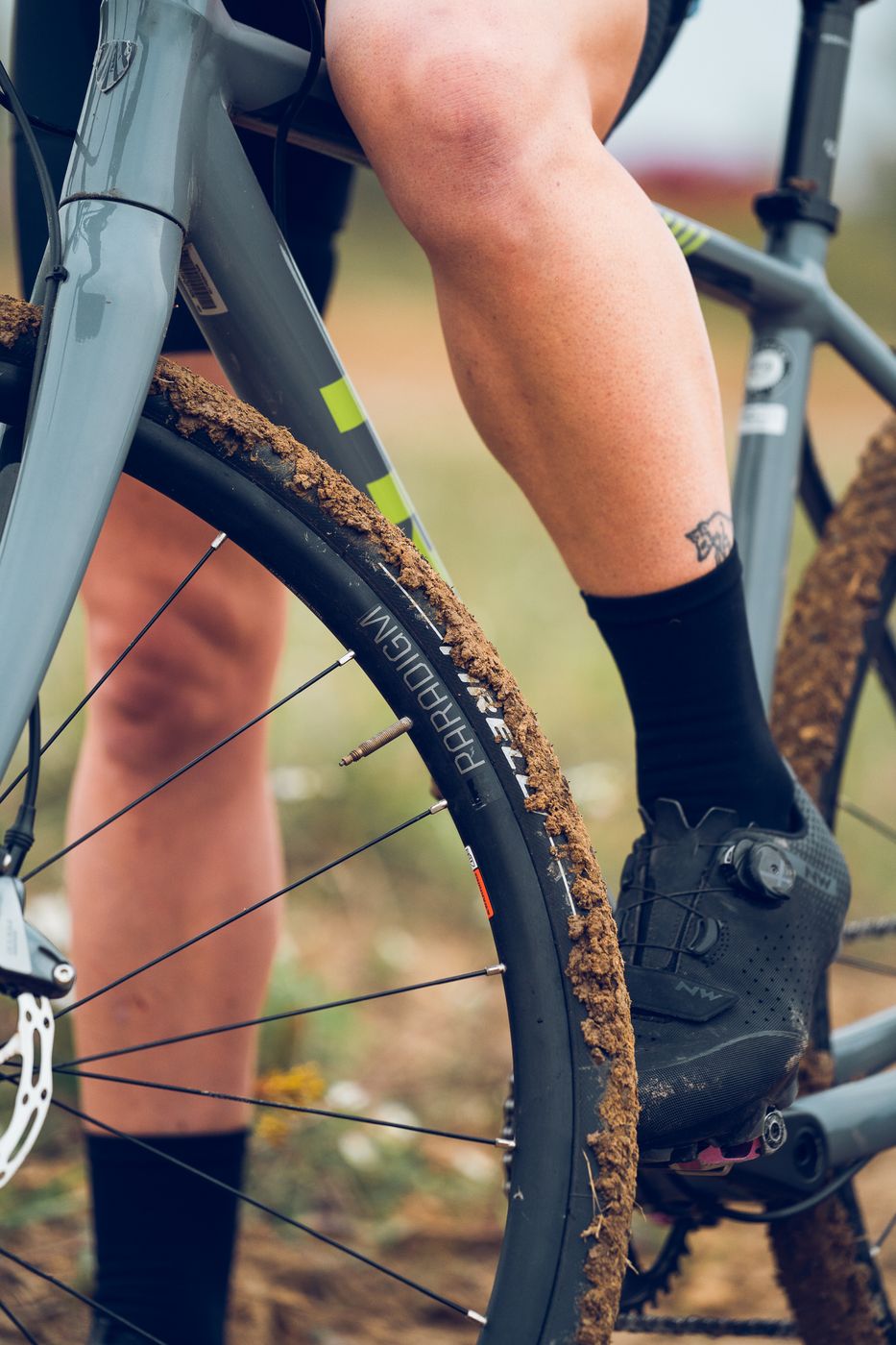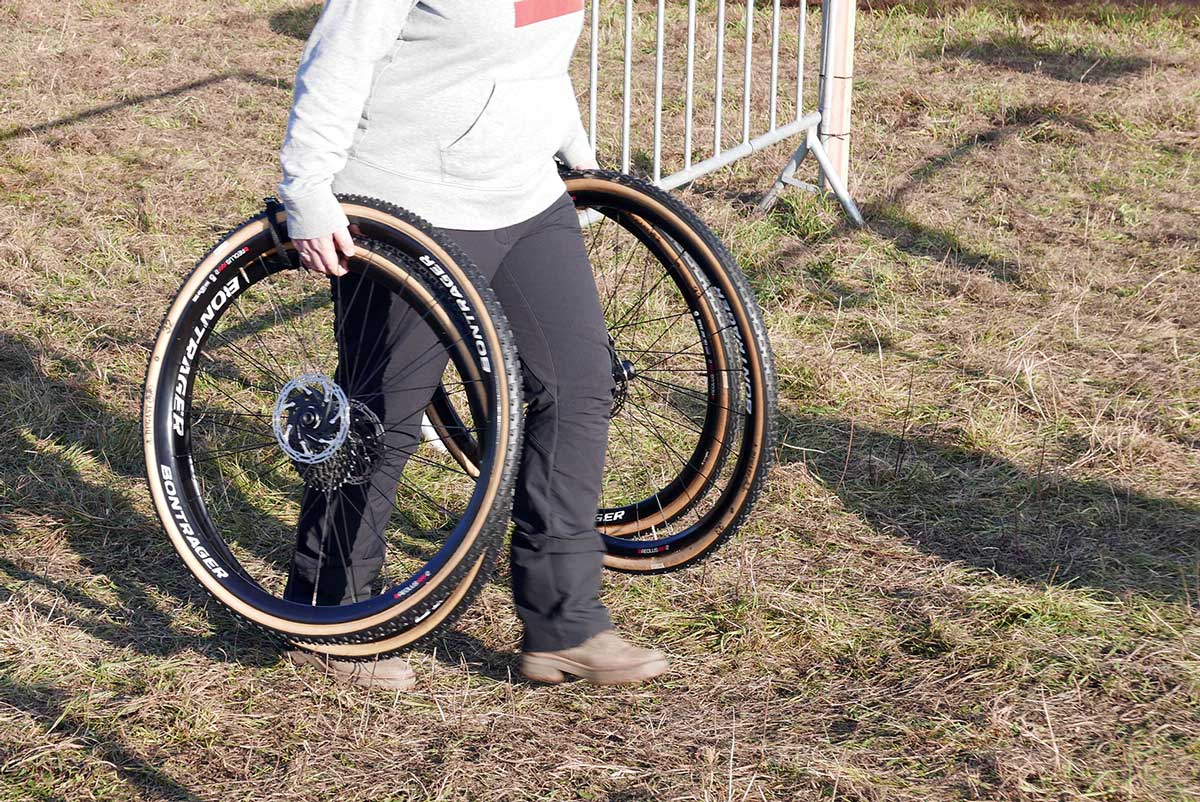Choosing the right cyclocross tire is a bit intimidating for new riders, and even longtime cyclocross racers struggle to choose the perfect tread for race day. Because cyclocross can be dry and hardpacked, grassy and corner-heavy, sand-blown, snowy, and of course, muddy as hell -sometimes all on the same day- there are hundreds of tire options available.
And even once you’ve chosen a tread, you need to debate the merits of tubular, tubeless, or clincher tires. Luckily, the Bikerumor crew is more than a little cyclocross-obsessed, and here, we’re sharing our favorite tires that have stood up to years of use and abuse.
We’ve divided this guide into five sections:
Most of us are running tubeless tires, and almost every modern clincher cyclocross tire is now tubeless-ready. So, whether you want to run tubes or not, they fall into the same category. If you’re not sure which way to go, or how to set your tire pressure, or have other questions, scroll down to check out our Buyer’s Guide and FAQ sections!
We’ve personally tested and raced every tire in this guide, and as new tires roll out, we’ll update it if we find a new favorite!
Best Tubular Tires for Cyclocross
Best All-Around Tubular: Challenge Baby Limus Team Edition
The Baby Limus was born from Challenge’s mud tire, the Limus. The Baby Limus takes the tread pattern from the classic and adapts it to be an all-around tire capable of performing in every kind of condition. If you only have one tubular wheelset, these are the tires that we recommend.
As with all of Challenge’s Team Edition tires, these handmade tubulars are ultra-supple thanks to 320 TPI (threads per inch) woven into the cotton casing, a natural rubber tread that’s softer than the more budget-friendly vulcanized models, and a seamless latex inner tube in the middle. We also love their latest Handmade Tubeless Tubular construction for rocky tracks since it allows repair with plugs and tubeless sealant.
- Type: Tubular
- Style: All-around
- Sizes: 700x33mm
- TPI: 320 TPI
- Weight: 411 grams for 700x33mm
- MSRP: $115
PROS: Great for any condition, from mud to sand
CONS: Pricey
Best Tubular, Runner Up: Dugast Typhoon
A. Dugast is the first and last name (literally) in cyclocross tires. It’s impossible to talk about CX tires without acknowledging Dugast, which was founded by—you guessed it—André Dugast in the seventies. For many years, Dugast tires were some of the only options available for serious cyclocross racers. The tradition has continued, and we love the Typhoon’s cotton casing for a supple ride capable of winning on World Cup courses as well as your local track. As a nod to the changing times, unlike many cyclocross tires that are only manufactured in 33mm sizes, Dugast added wider options for riders looking for more comfort on their bikes. (Find out more about tire width in the buyer’s guide below.)
- Type: Tubular
- Style: All-around
- Sizes: 700 x 32, 33, 34 and 38mm
- TPI: Not listed
- Weight: 380 grams for 700x32mm
- MSRP: $110
PROS: Extremely durable for tubulars
CONS: Pricey
Best Mud Tubular: FMB SSC Super Mud
Another historic French company, FMB has been around for a long time in the cyclocross space. We love the handbuilt SSC Super Mud for the muckiest of races. Casual racers likely won’t mount a mud tire as their primary tubular tire, but if you live in an area with a lot of mud, using these as your main racing tires or mounting them on a spare wheelset is a smart move.
Mud tires like this have stronger, deeper treads with plenty of space between the lugs, and we’ve found that the SSC Super Mud sheds it better than any other, thanks to the lightning-shaped lugs that help the mud fly off. The tires use a natural cotton casing to make them more malleable to provide ample traction in corners.
- Type: Tubular
- Style: Mud
- Sizes: 700 x 30 and 33mm
- TPI: 330 TPI
- Weight: 431 grams for 700x33mm
- MSRP: $77
PROS: You’ll get the best traction in the worst conditions, relatively affordable
CONS: Very specific tread, so it’s a commitment to use a mud tubular
Best Sand & Snow Tubular: Challenge Dune Team Edition
The Dune is aptly named, since it was designed with the classic World Cup venue in Koksijde, Belgium, in mind. That course is covered with sand dunes and huge swathes of loose, soft sand that require huge amounts of fitness and handling to make it through… and exactly the right tires.
File treads, like mud tires, are pretty darn specific, but if you race in an area that has a lot of hardpack or sand, like Southern California, they’ll be the fastest option. We love the Dune for its ability to blaze through straight sandy sections, then hit a corner and get just enough traction from the side lugs to make it through without sliding out. The side lugs are just part of the equation, though. The 320 TPI casing, natural rubber tread, and latex tube inside help the tire fold and mold to the shape of the ground as you hit those turns.
Here’s what’s crazy: It also works great on hardpacked snow and ice. Why? because it puts more rubber on the ground, and the pyramid-shaped nubs grab better than bigger (but fewer) lugs on regular tires. It seems counterintuitive, but it’s common practice among pros and amateurs alike, and we’ve found them to be the absolute best type of tread for frozen ground.
- Type: Tubular
- Style: Sand / Hardpack / Snow / Ice
- Sizes: 700x33mm
- TPI: 300 TPI
- Weight: 420 grams for 700x33mm
- MSRP: $90
PROS:
CONS: Pricey
Best Tubeless Tires for Cyclocross
Best All-Around Tubeless: Donnelly PDX World Cup (Tan Sidewall)
Donnelly tires might be made in Europe, but they’re named after American airports of cities that share the same qualities as their tires. We love the PDX—named for the Portland airport—for an all-around tire, though the mud is where it really shines. Still, if you only want to mount one pair of tubeless tires, this one is a great option.
Unlike many tubeless tires, this one uses a softer-than-normal rubber on the sides of the tires so they mold to the terrain around tight corners…they literally feel like they’re grabbing onto the ground. They’re relatively easy to mount as tubeless and can also be used as clinchers if you just don’t have time or energy to set up tubeless (though we recommend doing so in order to ride with lower PSI!). The lugs are tall, so you won’t love this tire on the road or gravel, but on any off-road terrain, this tire flies.
- Type: Tubeless
- Style: All-around
- Sizes: 700x33mm
- TPI: 240 TPI
- Weight: 360 grams for 700x33mm
- MSRP: $80
PROS: Great price point for such a supple tire
CONS: Not ideal for gravel riding when not racing
Best Mud Tubeless: Challenge Limus TLR
As Challenge is quick to note, Limus means mud in Latin. And it is truly one of the best mud tires on the market, regardless of which style Limus you get. We love that it’s available as a tubular and a tubeless option, but we find that really shines as a tubeless tire. It’s aggressive, it sheds mud and muck like it’s coated in PAM spray, and it’s just a ton of fun on mucky courses.
It’s not a tire that should be used on a dry day, though, so this is definitely a second-wheelset kind of tire. But at $60 per tire, it’s relatively inexpensive, so if you have a spare wheelset, this Limus TLR clincher with 120TPI nylon casing is a durable mud-friendly option that can be set up tubeless, or with tubes if that’s the only kind of wheelset you have to spare.
- Type: Tubeless
- Style: Mud
- Sizes: 700x33mm
- TPI: 120
- Weight: 350 grams for 700x33mm
- MSRP: $60
PROS: Great for muddy conditions, lightweight
CONS: Only available in 700x33mm sizing
Best Dry Conditions Tubeless: IRC Serac Edge CX
If this looks like a typical file tread tire, look again. The triangle lugs are slightly taller, with a bit more spacing between them, and that’s what sets this tire apart for dry, grassy, and sandy courses. They’re low enough to roll fast, but with a bit extra bite to prevent the tire from spinning out on standing climbs and sprints. Small side lugs aren’t terribly aggressive, but they manage to keep us upright on fast corners and off-camber traverses just fine.
IRC’s cyclocross tires also seem to hold air well (with sealant, of course). Offroaders know that “airing down” their tires helps them float over soft sand, and the same applies here. The Serac’s higher-than-normal 182tpi casing is supple, and when run at lower tire pressures they’ll really maximize traction and floatation on soft, sandy courses.
- Type: Tubeless
- Style: Grass / Sand / Hardpack
- Sizes: 700 x 32
- TPI: 182 TPI
- Weight: 380 grams for 700x32mm
- MSRP: $80
PROS: Fast, grippy, and supple
CONS: Slightly narrow
Best Mixed Conditions: Vittoria Terreno Mix Tubeless TNT
We’ve found that the Vittoria Terreno Mix TNT is perfect for exactly what the name implies… Mixed conditions. Maybe it’s a little wet in spots, dry in others, and just damp or rocky or rooty elsewhere: This one can handle it. The tightly spaced center knobs help it roll fast, and the micro knobs on the outer edge boost off-camber traction at the extremes.
We also appreciate that a 38mm option is available, making it comfier for the masters racers who prefer more cushion. At $60, it’s a great price for a long-lasting tubeless tire that’s easy to set up. And even cheaper options are available, so if you’re truly on a budget, they offer a standard Terreno Mix as a non-tubeless clincher for just $46.
- Type: Tubeless
- Style: All-around / Mixed conditions
- Sizes: 700 x 31, 33, 38mm
- TPI: 120 TPI
- Weight: 420 grams for 700x33mm
- MSRP: $60
PROS: Great price point, good all-around performance
CONS: A little heavy
Best Snow Tire: Vittoria Terreno Dry
Don’t let the model’s “Dry” moniker fool you, there are a lot of top-level riders racing the Vittoria Terreno Dry cyclocross tire on the snow and ice. What makes this tire unique on the market is the hexagonal “fish scale” center tread blocks. Each one is slightly ramped, which gives it better braking traction while still rolling super fast. And, combined with transitional side knobs, those micro edges help improve cornering grip.
No tire is going to work miracles on ice and snow, but this one puts more rubber on the ground than a file tread, and when run at low pressures, it somehow grabs what little traction is to be had and makes the most of it. They offer regular clinchers, too, so make sure you get the “TNT” versions to be able to set them up tubeless and gain extra puncture and sidewall cut protection layers in the casing.
- Type: Tubeless
- Style: Hardpacked snow and ice
- Sizes: 700×31, 33, 35, 38mm
- TPI: 120 TPI
- Weight: 410 grams for 700x33mm
- MSRP: $60
PROS: Great traction on ice and snow, relatively affordable
CONS: A little heavy
Best Budget Cyclocross Tire: Challenge Grifo Clincher
Fair warning, this one is NOT tubeless ready, but if you’re tight on cash, grab the Challenge Grifo Clincher, made with vulcanized rubber. The Grifo tread has been around for a decade, and it remains one of the best all-around tires on the market. While you can get more supple tubular options with cotton casing, we’ve been super-impressed by the clincher version, which still provides plenty of traction and comfort on grassy courses as well as muddy ones.
Want something more supple but not ready to commit to tubular or tubeless tires? You can upgrade to Challenge’s handmade clincher options, though you’ll pay $25 more per tire. Personally, we think the upgrade is worth it for the better cornering as well as the classic yellow sidewalls, but this version is great for beginners to get a taste of what a good tire can do!
- Type: Clincher
- Style: All-around
- Sizes: 700 x 33
- TPI: 120
- Weight (700x33mm): 395 grams
- MSRP: $50
PROS: Great all-around tire at a low price
CONS: Requires tubes, not as supple as tubular or handmade clincher options
Best Gravel ‘Cross-over Tires
Best Gravel/CX Combo: Pirelli Cinturato Gravel Mixed
We like a tire that can do it all, and the Pirelli Cinturato Gravel Mixed tire is a fantastic option for someone who wants to jump into a couple of cyclocross races, but still prefers to spend most of the time riding on gravel and exploring country roads. Made with a triple-layer fabric casing that’s topped with a bead-to-bead Aramid puncture protection belt and Pirelli’s Speedgrip Compound, it’s not the most supple tire on the market. But it can hold its own in pretty much any condition, and hold up to the worst road surfaces and debris without flatting.
Even with tubes, it can run at relatively low PSIs and hooks up well in grassy corners and sandy berms. And we appreciate that it comes in plenty of sizes, from 700 x 35, 40 and 45mm to 650b options in 45 and 50mm. The only downside is that it won’t pass muster for a UCI elite cyclocross race, which requires tires to be under 33mm.
- Type: Tubeless
- Style: Gravel
- Sizes: 700 x 35, 40 and 45mm; 45 and 50mm x 650b
- TPI: 127 TPI
- Weight: 445 grams (for 700x35mm)
- MSRP: $70
PROS: Ideal for gravel riders who want to jump into cyclocross occasionally
CONS: Doesn’t come in 33mm sizing, so technically not legal for most races
Best Dry Conditions Crossover: Specialized Tracer Pro 2Bliss Ready
This one’s a tricky recommendation because it’s both a great cyclocross tire and a great gravel tire… except you’d want a different size for each, and the ‘cross-approved 700×33 and 38 sizes are hard to find.
But, if you’re racing hardpack in a place like Southern California, or you’re a gravel rider who may jump into a cyclocross race or two, the Specialized Tracer Pro 2Bliss Ready tubeless tire is a good place to start. This tubeless-ready tire has a wide range of sizes and is designed for ‘cross-curious gravel riders. It comes in widths from 33mm to 47mm wide, so if you’re a gravel grinder who wants more cushion, this is a great choice. (But be warned: if you’re jumping into a muddy race, you may find yourself slipping and sliding.)
- Type: Tubeless
- Style: Hardpack
- Sizes: 700 x 33, 38, 42, 47mm
- TPI: 60 TPI
- Weight: 365 grams for 700x33mm
- MSRP: $50-$55
PROS: Fantastic for hardpack conditions
CONS: Low TPI makes it less supple
Buyers Guide for Cyclocross Tires
Know what wheelset you’re using. Not all tires are the same, and in recent years, there’ve been so many additions and new trends in wheels and tires that it’s easy to misunderstand which tire will fit your rim. You also want to make sure that if you want tubeless tires, your rims are also tubeless ready. And tubulars require tubular-specific wheelsets.
It’s worth pointing out that modern gravel wheels are almost all tubeless ready, but have fairly wide inside bead-to-bead measurements that could cause your 33mm tire to measure as much as 35mm…which could technically disqualify you (if they check).
Tubeless versus tubular versus clincher. We go into more detail below, but generally, most top PRO riders run tubular tires (tires that have a tube sewn inside and are glued to your wheels). Some are making the switch to tubeless (which uses a sealant to seal air inside tire, rather than a tube). And of course, clinchers are always an option (with tubes inside), though they require you to run a much higher tire pressure to avoid flatting.
Tread is based on the type of racing you do. If you live in sunny southern California, then your races are likely all on hardpack dirt and a set of file treads is optimal. But if you live in a wet muddy area like Oregon, a mud tire might be the best choice. If you have differing race course conditions but can only afford a single set of wheels and tires, opt for an all-arounder. And if you do have the ability to have two sets of cyclocross wheels, we’re fans of having one that generally works for your racing style, like a mud tire, plus an all-arounder so you’re ready for anything.
Double-check size and style. Since tire size and width are both important factors, make sure that you’re getting the right style—tubular, tubeless, or clinchers—since many treads come in multiple styles. This gets especially important if you’re shopping a sale, as less popular (i.e. non-tubeless) tires and sizes tend to get discounted more often.
Determine your budget. You may notice that on this list, tires range from $120 per tire down to $50, and can get as low as $30 if you look for ultra-budget versions (like Vittoria’s Terreno in a non-tubeless clincher). However, the cheaper you go, the less supple the tire tends to be. This isn’t a big deal if you’re riding in a straight line on the road, but because cyclocross is full of tight, fast turns, you want a tire to be supple and malleable in order to mold and deform as you lean into a corner, in order to have better traction.
The pricier tires use different materials to make the sidewall less rigid. And of course, tubulars are pricier because they come with a tube installed inside of them, typically are handmade, and are much less popular than generic clinchers or tubeless tires, so you’re paying a premium.
Frequently Asked Questions about Cyclocross Tires
What are the different types of cyclocross tires?
- File tread: File treads have a very low tread in the middle with knobs on the sides, and are typically used for hardpack, sand, and snow conditions.
- Mud: Beefier treads with plenty of space between the lugs define mud tires—they’re designed to allow the mud to ‘shed’ off of the tire as you make your way through, with taller lugs to dig into the muck and create traction.
- All-around: Typically, these will look similar to a mud tire at a glance, but the treads will be a bit lower and closer together, in order to get better traction offroad and in grass, but not feel squirmy on harder surfaces.
- Gravel: Low treads, usually tightly packed in the center to roll smoother, with maybe some side lugs for cornering. These will be more like a cyclocross/road tire hybrid.
What’s the difference between tubeless and tubular?
Simply put, tubular tires are tires that have a tube sewn inside and are glued to your wheels. Tubeless tires—what most mountain bikers use—require a sealant inside to seal the tire on and keep the air in, rather than using a tube. And of course, clinchers—tires that require a tube inside to hold air—are a budget alternative.
What tire width should I run for cyclocross?
It depends…are you racing for real? Or just for fun? And does your race promoter care? We’ve seen one guy race a fat bike on a snowy course and win, but it kinda defeated the point of ‘cross, which is suffering.
Seriously thought, it depends. If your race promoter isn’t checking it and hasn’t stated rules, then tires from 35mm to 40mm will give you more traction and comfort, but the bigger you go, the heavier they get.
If you’re racing a UCI-sanctioned event, then you’re limited to 33mm wide when mounted to the tire. Remember, some rims will make your tire effectively wider, so mount them early and measure.
USA Cycling’s rules are different. The chart above is out of their 2021/22 rule book, so your maximum tire width depends on the class you’re racing in or your age. Pretty much no races allow tires with any sort of hard spike or stud on them…it’s a safety issue. No one wants to get run over with those!
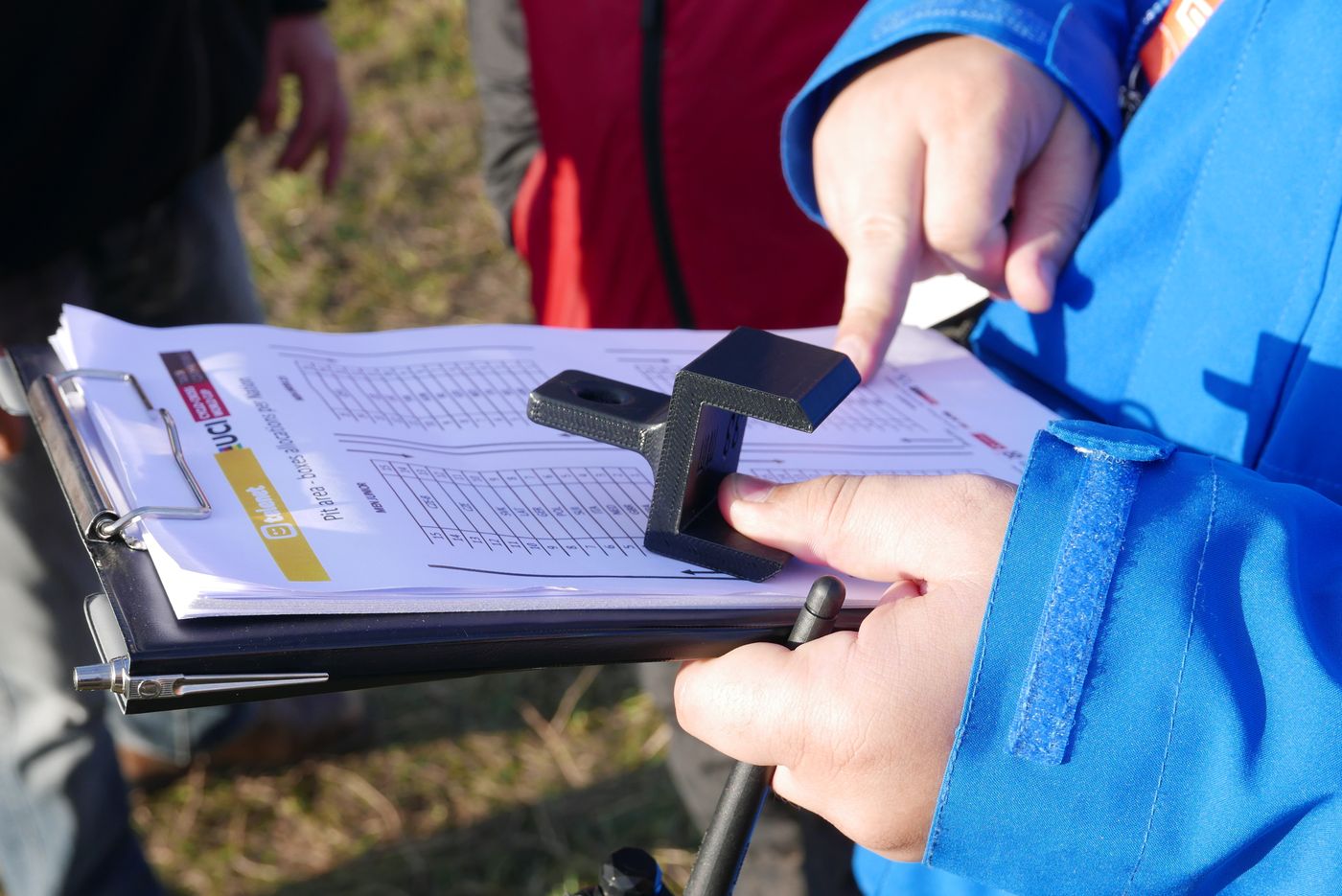
What tire pressure should I run for cyclocross?
We could write a treatise on this, but the short answer is: As low as you can without flatting. Typically, that is around 18 to 33 PSI, depending on your tires (tubular can run the lowest, followed by tubeless), your body weight (the lighter you are, the lower you can safely go), and the course (a lot of small roots or rocks will require higher PSI than a course that’s all grass).
The goal? To maximize traction by letting the tire deform to the ground quickly and easily. As weird as it sounds, if you feel like you’re just on the edge of peeling the tire off your rim on the hardest corner you make, that’s probably the perfect PSI.
For muddy conditions, experiment with slightly higher pressure so your tire bites through the muck to hit harder ground underneath. But for snow and sand, go lower so it floats better without sinking down into the ground so much.
Can I run mismatched tires?
As with mountain biking, you can run mismatched tires, and some pros certainly will in very specific course conditions. We don’t recommend mixing and matching something like a file tread with minimal knobs with a mud tire, but a mud tire in the front and an all-arounder in the rear is certainly a reasonable combination. Ultimately, it’s experience that will help you narrow down specific tire selections per course and weather, so just start with a good all ’rounder and go from there.
Do I need tubulars?
Absolutely not. At the highest level, tubular tires will help you ride smoother and speedier, but you can definitely start racing with clinchers. Heck, cyclocross is such a welcoming sport that you can race it on a mountain bike to get started! Some of us would even argue that with the modern crop of tubeless-ready tires being so good, the marginal gains to be had from tubulars aren’t worth the extra hassle for most riders.
Can I put tubular tires on any cyclocross wheels?
Sadly, no. You need tires that are specifically designed for tubular tires, so often, the wheels that come stock with a cyclocross bike won’t work with tubular tires.
How do I install tubular tires?
If you haven’t installed a tubular tire before and you want to try it on your own rather than taking it to a local bike shop, you’re going to want to watch some how-to videos before taking the plunge, since these pricey tires require a lot of TLC to get them in place. We like this how-to video from ENVE wheels to get you started:
WTF are “open” tubulars?
Basically, an open tubular is a kind of fancy way of saying “clincher, but with a nicer, more supple sidewall.” Meaning, it’s got a higher end construction that’s similar to how tubulars are made, except they’re for normal clincher rims. Consider Challenge’s Grifo: The handmade clincher option has a super-poly casing and 300 TPI, while the less expensive vulcanized rubber option only has 120 TPI. It may sound like hype, and they’re expensive, but they actually can make a huge difference in a cyclocross race!
What’s the deal with cotton sidewalls?
Cotton sidewalls are, in a word, supple. While they’re a bit pricier than all-rubber options, they will make your tires feel smoother as you navigate the course.

Seriously, why do I want “supple” anything on cyclocross tires?
Supple tire casings and sidewalls allow your tires to conform to the ground as you pedal, particularly in corners. If a tire can slightly fold on itself in a corner, you’ll have better traction between the ground and the side treads on your tires. For that reason, we’re excited about the recently released tubeless-ready FMB Slalom/Super Mud Open Tubulars: The potential for such a high-quality supple handmade CX tubeless option sounds great since most tubeless CX tires still rely on stiff vulcanized construction that can’t match the grip at ultra-low pressures of a premium tubular.
How do I set up tubeless tires?
Again, if you’re doing this yourself for the first time, congrats! We’re obviously fans of learning how to do more with your gear. However, don’t try to figure it out without watching a video or two, like this one from Stan’s NoTubes in order to learn a few tips. And make sure that your wheels are actually going to work with tubeless tires—ask your local bike shop for help if you’re struggling!
Should I go tubular or tubeless for cyclocross?
It depends on what you currently have, and what your level of ‘cross commitment is. Some of us still prefer tubular for serious racing, thanks to their supple construction and rideability at lower PSIs for better traction in corners. But most of us have come to appreciate newer tubeless options since it’s easier to swap them out in different conditions or at the end of the season to make your bike more gravel-friendly. We also like tubeless tires for a set of spare wheels that can be swapped out the night before a race to suit conditions, and for trail riding to work on skills.
What tubeless sealant should I use if it’s freezing?
When temperatures start to drop, you’ll want to use cold-weather sealants rather than your standard Stan’s NoTubes. We like Joe’s NoFlats Super Sealant and Orange Seal’s Subzero options for protection from flats that won’t freeze.
Why do some people bring spare wheels to the races?
Most courses will loop riders past a pit area at least twice per lap. Given the sometimes harsh conditions, you’re allowed to have a spare bike or extra sets of wheels in a neutral zone in case something breaks or you flat. The pros have entire teams pitted there to keep them running on virtually clean bikes for every lap, and sometimes every half lap! It’s absolutely amazing to witness, check the video above.
For most of us, having to pit or change a wheel mid-race likely means our “race” is over, but it’s a way to finish out the day without DNF’ing. And you never know what might happen to the folks in front of you, so just finish it out no matter what. Regardless which tires you choose, remember cyclocross is about all-out suffering for 30-60 minutes and then wanting to do it again 10 minutes after you finish. Just go have (type 2) fun!
